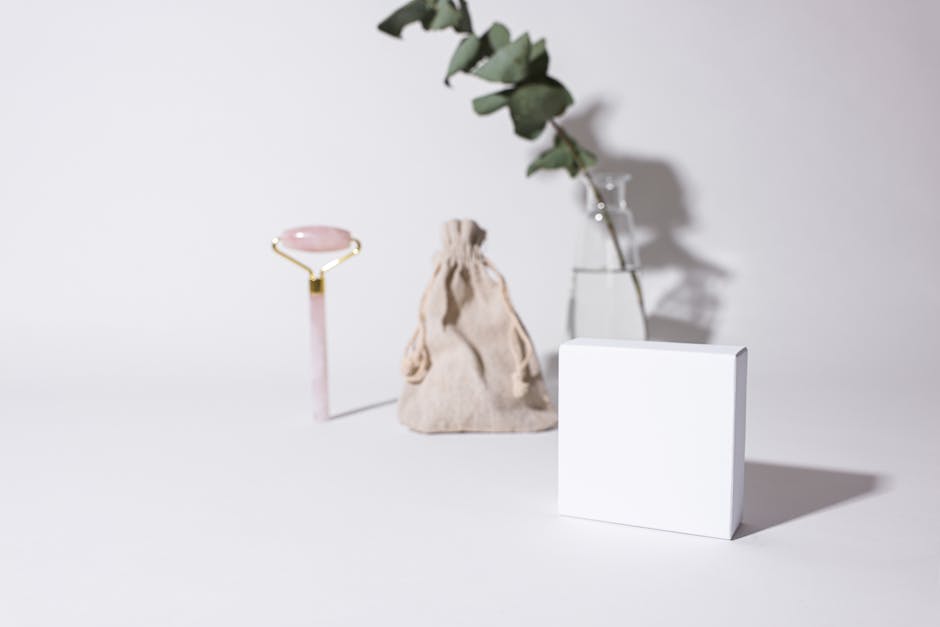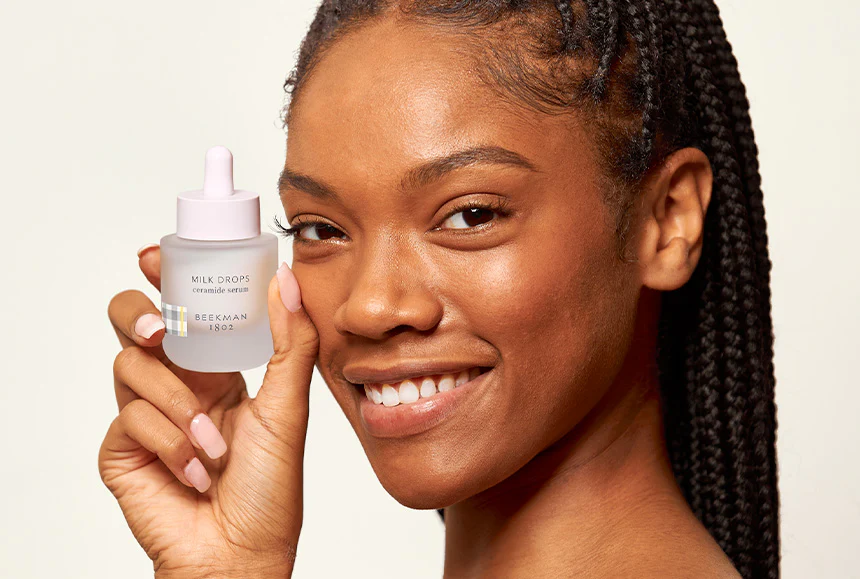The Science of Aging Naturally
Anti-aging natural remedies offer effective alternatives to expensive creams and procedures. If you’re looking for ways to reduce wrinkles and maintain youthful skin naturally, here are the most effective options:
| Natural Remedy | Benefits | Scientific Support |
|---|---|---|
| Aloe Vera | Improves collagen production, hydrates | 2009 study showed 90-day supplementation significantly reduced wrinkles |
| Vitamin C (topical) | Boosts collagen, brightens skin | 2017 study showed improved skin texture after 3 weeks |
| Rosehip Oil | Promotes skin renewal, contains natural retinoids | Supports elasticity and reduces hyperpigmentation |
| Green Tea | Protects against UV damage, anti-inflammatory | Rich in polyphenols that fight free radicals |
| Pomegranate | Improves skin elasticity and brightness | 2022 study showed improvements after 8 weeks |
| Honey | Natural humectant, antimicrobial properties | Locks in moisture and supports skin barrier |
| Facial Massage | Improves circulation and product absorption | 2017 study showed improved effects when combined with creams |
Aging is a natural process that each of us experiences. While we can’t stop time, we can certainly influence how our skin ages through natural methods that work with our body’s own processes.
The search for the fountain of youth is as old as human history itself. What’s changed is our understanding of skin aging at the cellular level. Up to 80% of visible aging comes from environmental factors – particularly sun exposure – rather than genetics or the simple passage of time.
This means we have significant control over how quickly our skin shows signs of aging. By combining effective natural ingredients with smart lifestyle choices, we can maintain youthful, radiant skin well into our later years.
Natural remedies work differently than synthetic options. Rather than forcing rapid changes that might stress the skin, they support your body’s innate regenerative processes. They’re often gentler, more sustainable, and create lasting results when used consistently.
For Emma and others seeking clean beauty alternatives, these natural approaches offer peace of mind along with effectiveness – no harsh chemicals, animal testing, or environmental damage required.

Understanding Why Skin Ages in the First Place
Ever wonder why your skin doesn’t look quite as bouncy as it did in your 20s? Understanding the “why” behind skin aging helps us tackle it more effectively with anti-aging natural remedies.
Your skin’s aging story begins in your mid-20s, when collagen production starts its slow decline—about 1% less each year. This protein, along with elastin, gives your skin that plump, firm quality we associate with youth. By your 40s and 50s, this natural slowdown becomes visible as fine lines, wrinkles, and a bit of sagging.
But here’s the surprising truth: the calendar isn’t your skin’s biggest enemy. According to research, up to 80% of visible aging comes from sun exposure, not time itself. This process, called photoaging, happens when UV rays penetrate your skin and create free radicals—those troublemaking molecules that damage your cells and DNA.
“The sun is responsible for so much of what we perceive as aging,” dermatological research reveals. “Many people in their 40s and 50s are really seeing the accumulated sun damage from their teens and 20s appearing on their skin.”
Another sneaky aging culprit? Sugar. When excess sugar molecules attach to proteins like collagen, they create advanced glycation end products (AGEs)—making your skin stiff and more likely to sag. Think of it as caramelizing your skin proteins from the inside out!

Dynamic vs Static Wrinkles — Spot the Difference
Not all wrinkles are created equal—and knowing the difference helps you choose the right anti-aging natural remedies for your specific concerns.
Dynamic wrinkles appear when your facial muscles contract during expressions. Those crow’s feet when you smile, forehead lines when you raise your eyebrows, and laugh lines around your mouth all fall into this category. Initially, these lines disappear when your face relaxes, but after years of the same expressions, they can become permanent fixtures.
Static wrinkles, however, stick around even when your face is completely relaxed. These develop from gravity pulling on skin that’s lost elasticity, collagen breakdown, facial fat pad shrinkage, and accumulated sun damage. The jowls that form along your jawline, marionette lines running from the corners of your mouth to your chin, and those pesky neck wrinkles are all classic examples.
Your prevention approach should match the wrinkle type. For dynamic wrinkles, be mindful of repetitive expressions, wear sunglasses to avoid squinting, and try facial massage to relax overactive muscles. For static wrinkles, focus on building collagen through nutrition and topical treatments, shield yourself from UV damage, and keep your skin deeply hydrated.
Lifestyle Accelerators You Can Control
While some aging factors are simply part of being human, many lifestyle choices can either fast-track aging or help maintain your youthful glow.
Smoking tops the list of skin-damaging habits. Beyond restricting blood flow and depleting oxygen, it exposes your skin to thousands of chemicals that break down collagen and elastin. Studies show smokers often look 5-10 years older than non-smokers—a high price for a habit with no benefits.
Your sweet tooth might be aging you too. A sugar-heavy diet promotes that glycation process we mentioned, creating stiff, inflexible proteins in your skin. Research shows people who consume lots of refined sugars and processed carbs often show more advanced aging signs than those who limit these foods.
That evening glass (or two) of wine? Alcohol dehydrates your skin and depletes nutrients it needs to stay radiant. Regular excessive drinking can lead to a dull complexion, enlarged pores, and more noticeable wrinkles.
Sleep matters enormously for skin health. During deep sleep, your body produces growth hormone that repairs cells and tissues. Consistently shorting yourself on quality sleep (less than 7-8 hours) prevents this essential restoration process.
Finally, that chronic stress you’re feeling shows on your face. Stress triggers inflammation and releases cortisol, which breaks down collagen and weakens your skin barrier. Finding ways to manage stress isn’t just good for your mind—it’s essential for maintaining youthful skin.
The Science-Backed Power of Anti-Aging Natural Remedies
The power of anti-aging natural remedies isn’t just something your grandmother swore by—it’s supported by impressive scientific research. Unlike harsh chemical treatments that can shock your skin, natural remedies work in harmony with your body’s own healing abilities.
Think of antioxidants as your skin’s personal bodyguards. These remarkable compounds neutralize damaging free radicals before they can wreak havoc on your skin cells. It’s fascinating to realize that plants developed these protective compounds to shield themselves from environmental stress—and now we can borrow this natural wisdom for our skin!
Polyphenols—found in everyday plants like green tea, grape seeds, and pomegranate—have become superstars in the anti-aging world. I was particularly impressed by a 2022 study showing that fermented pomegranate extract significantly brightened skin, improved elasticity, and boosted moisture in just eight weeks. Nature’s results can be both gentle and dramatic.

Plant oils do more than just moisturize—they deliver essential fatty acids and fat-soluble vitamins that strengthen your skin’s protective barrier. Rosehip oil, for example, contains natural forms of vitamin A that encourage healthy cell turnover without the irritation often experienced with synthetic versions.
Have you heard about adaptogens? These remarkable plants help your body resist various stressors and are gaining well-deserved recognition for their skin benefits. Herbs like ashwagandha and holy basil help regulate those pesky stress hormones that can accelerate aging when chronically liftd.
The results can come surprisingly quickly too. A 2017 study published in the Journal of Clinical and Aesthetic Dermatology found that applying vitamin C topically for just three weeks significantly improved skin texture and reduced wrinkles on the face and neck. This scientific research on vitamin C and skin confirms what many natural beauty enthusiasts have experienced firsthand.
How Anti-Aging Natural Remedies Outperform Many OTC Creams
While beauty companies spend millions marketing their latest anti-aging creams, natural remedies often deliver better results for several compelling reasons.
The magic lies in synergy. Natural ingredients don’t work in isolation—they work as teams. Take rosehip oil: its vitamin C is more stable and effective because it’s accompanied by bioflavonoids that improve its action. It’s like having a whole orchestra rather than a single instrument.
Your skin will likely thank you for fewer irritants, too. Many commercial anti-aging products contain synthetic fragrances, preservatives, and texturizers that can trigger reactions, especially as our skin becomes more sensitive with age. Natural remedies typically skip these problematic additives.
Barrier support is another significant advantage. While some aggressive anti-aging ingredients can actually thin your skin’s protective barrier, plant oils and butters help reinforce this crucial defense system. It’s the difference between forcing your skin to change versus nurturing its natural health.
Let’s talk about your wallet too—natural remedies are often surprisingly cost-effective. A quality bottle of rosehip oil might cost $15-25 and last for months, while those fancy department store creams can set you back hundreds for similar (or lesser) results.
As one refreshingly honest dermatologist told me, “Some of my patients get better results from simple, natural products than from expensive creams with long ingredient lists. The key is consistency and choosing evidence-based natural ingredients.”
Anti-Aging Natural Remedies vs. Prescription Retinoids
Retinoids (vitamin A derivatives) are often hailed as the gold standard in anti-aging skincare, but how do natural alternatives really compare? Let’s break it down:
| Factor | Natural Alternatives | Prescription Retinoids |
|---|---|---|
| Speed of Results | Gradual improvement over 4-12 weeks | Noticeable changes in 6-12 weeks |
| Irritation Risk | Minimal to none | Moderate to high (redness, peeling, sensitivity) |
| UV Sensitivity | Generally safe for daytime use | Increases sun sensitivity |
| Pregnancy Safety | Most are safe (consult healthcare provider) | Contraindicated during pregnancy |
| Cost | $15-50 for quality products | $30-150+ depending on insurance |
| Mechanism | Support skin’s natural processes | Force accelerated cell turnover |
While prescription retinoids can deliver impressive results, they follow a different journey than natural remedies. Retinoids often cause that dreaded initial irritation and purging before improvement, while anti-aging natural remedies typically provide gentle, consistent benefits without the uncomfortable adjustment period.
Many forward-thinking dermatologists now recommend a balanced approach: natural remedies for daily nourishment and barrier protection, with careful use of retinoids if needed for specific concerns.
“The question isn’t which is better—it’s what’s better for your unique skin,” as one thoughtful skincare formulator put it. “Some people thrive with retinoids, while others get equal or better results from consistent use of vitamin C, niacinamide, and botanical oils.”
The beauty of natural remedies lies in their gentle power—working with your skin rather than forcing it into submission. And isn’t that the kind of relationship we all want with our skin?
Build Your Daily Youth-Preserving Routine
Creating an effective anti-aging routine doesn’t require a medicine cabinet full of expensive products or complicated steps. The secret lies in consistency with a few powerful essentials that work with your skin’s natural processes.
Think of hydration as the foundation of youthful skin. When your skin cells are properly hydrated, they appear plumper, which means fewer visible fine lines. Plus, well-hydrated skin bounces back more quickly from environmental stressors. Try to drink those 8-10 glasses of water daily (yes, your mother was right about this one!), and include water-rich foods like juicy watermelon, cucumber, and leafy greens in your diet.
Perhaps nothing makes a bigger difference in preventing premature aging than your SPF habits. Startling statistic—up to 80% of visible aging comes from sun exposure! Make broad-spectrum SPF 30+ sunscreen your skin’s best friend, even on cloudy days or when you’re mostly indoors. Those sneaky UVA rays can penetrate windows, silently causing damage while you work or drive.
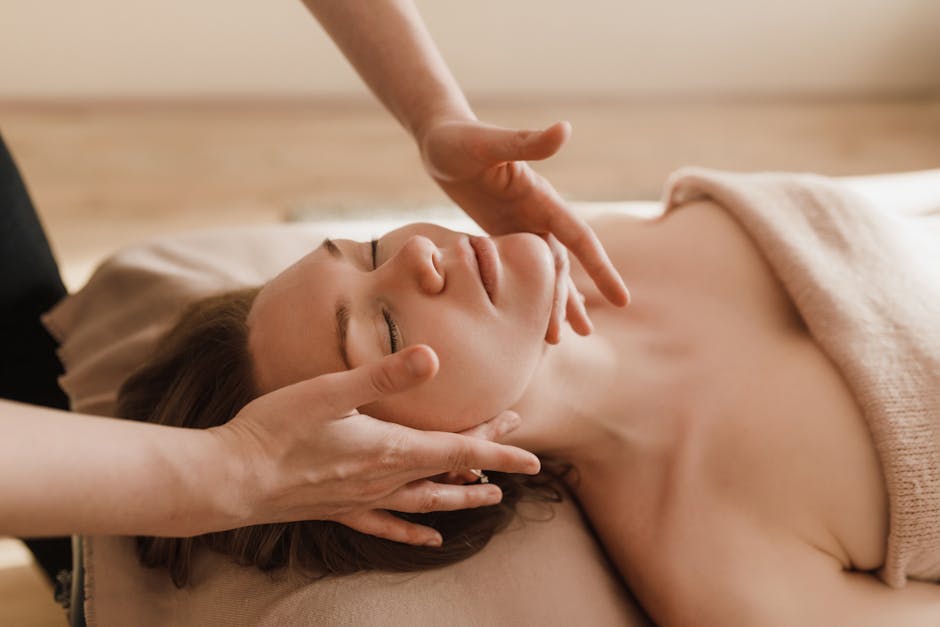
Gentle exfoliation helps remove the buildup of dead skin cells that can make your complexion look dull and tired. But beware of harsh scrubbing—it can damage your skin’s protective barrier. Instead, choose gentle enzyme exfoliants or light physical exfoliants like rice powder that polish without tearing delicate skin tissue.
I love recommending facial massage to my clients—it’s like a mini workout for your face! Just a few minutes of gentle massage improves circulation, reduces morning puffiness, and helps your skincare products penetrate more effectively. A 2017 study showed that combining facial massage with anti-aging products improved wrinkles, sagging, and texture after just 8 weeks.
Don’t underestimate the power of mindfulness practices for younger-looking skin. When you’re stressed, your body produces cortisol, which can break down collagen faster than normal. Even five minutes of deep breathing or meditation can help regulate those stress hormones and slow down stress-related aging.
Morning Ritual: Protect & Prevent
Your morning skincare should focus on shielding your skin from the day’s environmental challenges:
Start with a lukewarm cleanse using a gentle, sulfate-free cleanser. Hot water might feel good, but it strips away those precious natural oils your skin needs. Lukewarm water does the job without compromising your skin barrier.
After patting your face almost-dry, this is the perfect moment to apply vitamin C serum to freshly cleansed skin. This powerhouse antioxidant does triple duty—it neutralizes free radicals, brightens your complexion, and stimulates collagen production. 2017 study showing significant improvement in skin texture after just three weeks of daily vitamin C application? That’s the magic of consistent use!
Next, try a refreshing green tea mist for an extra layer of antioxidant protection. Green tea’s polyphenols work beautifully with vitamin C and help calm any redness or irritation you might be experiencing.
Finish with mineral sunscreen containing zinc oxide or titanium dioxide. These physical blockers provide immediate protection and are less likely to cause irritation than chemical filters.
Here’s a little DIY secret: Make your own green tea mist by brewing organic green tea, letting it cool completely, then transferring to a spray bottle. Keep it in your refrigerator for up to a week for a refreshing, antioxidant-rich pick-me-up throughout the day!
Night Ritual: Repair & Replenish
Nighttime is when your skin shifts into serious repair mode, making it the perfect opportunity to support regeneration:
Begin with a thorough double cleanse—first with an oil-based cleanser to dissolve sunscreen and environmental pollutants, followed by a gentle water-based cleanser to remove any residue. Think of it as wiping the slate clean before applying your anti-aging natural remedies.
While your skin is still slightly damp, apply pure aloe vera gel. A fascinating 2009 study suggested that taking a daily aloe vera gel supplement significantly reduced the appearance of wrinkles in just 90 days, while a 2015 study found that topical application significantly boosted collagen and hydration. It’s nature’s moisture miracle!
Now massage 3-5 drops of rosehip oil into your skin using gentle upward motions. Rich in essential fatty acids and natural retinol alternatives, rosehip oil supports cell regeneration without the irritation that sometimes comes with prescription retinoids.
One last tip that’s often overlooked: switch to a silk pillowcase! This simple change prevents those sleep wrinkles and reduces friction that can cause creasing and irritation overnight. Your skin (and hair) will thank you!
Weekly Boosters That Matter
Think of these weekly treatments as special boosts to complement your daily routine:
Enzyme masks use fruit-derived enzymes like papain (from papaya) and bromelain (from pineapple) to gently dissolve dead skin cells without harsh scrubbing. Use once weekly for brighter, smoother skin that better absorbs your favorite products.
Oatmeal scrubs provide gentle physical exfoliation while simultaneously calming inflammation—perfect for sensitive skin types! Mix finely ground oatmeal with a dollop of honey and a splash of milk for a soothing treatment that polishes without irritating.
Gua sha massage, a traditional Chinese technique using a smooth-edged tool, helps stimulate circulation, reduce puffiness, and improve lymphatic drainage. Studies show that regular facial massage can improve product penetration by up to 20%—meaning you’ll get more bang for your buck from your favorite serums and oils!
Consistency trumps complexity every time. A simple routine that you perform faithfully will yield far better results than an elaborate 12-step regimen you can’t maintain. Your skin responds to what you do most days, not what you do occasionally.
Want more personalized guidance for your specific skin concerns? Check out our skin-care coaching services for one-on-one support in creating your perfect routine.
Aloe Vera & Its Collagen-Boosting Magic
When it comes to anti-aging natural remedies, few plants match the legendary status of aloe vera. This succulent superstar isn’t just for sunburns—it’s a collagen-boosting powerhouse that deserves a permanent spot in your anti-aging arsenal.
The magic of aloe lies in its unique compounds called aloe sterols. These natural plant chemicals don’t just sit on the surface of your skin; they actively signal your cells to produce more collagen and hyaluronic acid—the two key components that keep skin plump and bouncy. A fascinating 2015 study published in the Annals of Dermatology confirmed what many traditional healers have known for centuries: regular aloe application significantly reduces wrinkles while boosting both collagen levels and skin hydration.
“Aloe vera is like a multivitamin for your skin,” notes one skincare formulator I spoke with. “It delivers hydration, anti-inflammatory compounds, and collagen-building nutrients all wrapped up in one simple ingredient.”
What makes aloe particularly special is how it hydrates. Unlike many moisturizers that simply sit on top of skin, aloe’s molecular structure allows it to penetrate deeply, carrying water and nutrients to the deeper layers where real renewal happens. Think of it as delivering a refreshing drink directly to your skin cells, helping them function at their best.
The plant’s renowned wound-healing abilities play a surprising role in its anti-aging benefits too. The same mechanisms that help heal a cut—improved circulation, reduced inflammation, and accelerated cell regeneration—also help repair the invisible daily damage from sun exposure, pollution, and stress that leads to premature aging.
Perhaps most impressive is what happens when aloe becomes part of your daily routine. A groundbreaking 2009 study found that participants who took a daily aloe vera gel supplement experienced significantly reduced facial wrinkles in just 90 days. Many also reported their skin felt noticeably more elastic and resilient.
Ready to incorporate this green gem into your routine? For topical benefits, smooth pure aloe vera gel onto freshly cleansed skin before applying other products. Let it absorb for a minute—you’ll notice it doesn’t leave a sticky residue, just soft, calm skin. For internal benefits, high-quality aloe vera juice or supplements can complement your topical routine, just be sure to follow the recommended dosage on the package.
What I love about aloe is its gentle nature—unlike many potent anti-aging ingredients that can irritate sensitive skin, aloe actually soothes while it works its collagen-boosting magic, making it suitable for virtually all skin types and concerns.
Green Tea Polyphenols for Free-Radical Defense
Your morning cup of green tea isn’t just warming your soul—it’s also a powerhouse for your skin! Green tea contains remarkable compounds called catechins, with epigallocatechin gallate (EGCG) leading the pack as a superstar in anti-aging natural remedies.
EGCG deserves its reputation as a free-radical fighting champion. Research shows it can be up to 100 times more effective than vitamin C at neutralizing certain types of free radicals. This makes green tea not just a pleasant beverage, but a serious contender in your anti-aging arsenal.
Beyond its antioxidant prowess, green tea brings impressive anti-inflammatory benefits to the table. When your skin gets red, puffy, or irritated, green tea compounds help restore calm. This matters tremendously because chronic inflammation silently accelerates aging by breaking down the collagen and elastin that keep your skin firm and bouncy.
“Green tea is one of the few ingredients with solid evidence for both topical and internal anti-aging benefits,” explains one researcher. “The combination approach maximizes results.”
What’s particularly exciting about green tea is its ability to help repair existing sun damage—not just prevent future harm. Studies have found that both drinking green tea and applying it topically can help reverse some UV-induced skin changes by supporting your skin’s natural DNA repair mechanisms.
Ready to bring green tea’s benefits into your routine? Try this three-pronged approach:
First, enjoy 2-3 cups of quality green tea daily to flood your system with protective antioxidants. Second, don’t toss those used tea bags! Once cooled, they make perfect compresses for puffy eyes, with the gentle pressure and antioxidants working together to reduce swelling. Finally, treat yourself to a simple matcha mask by mixing ceremonial-grade matcha powder with just enough water to form a smooth paste, then applying to clean skin for 10-15 minutes before rinsing.
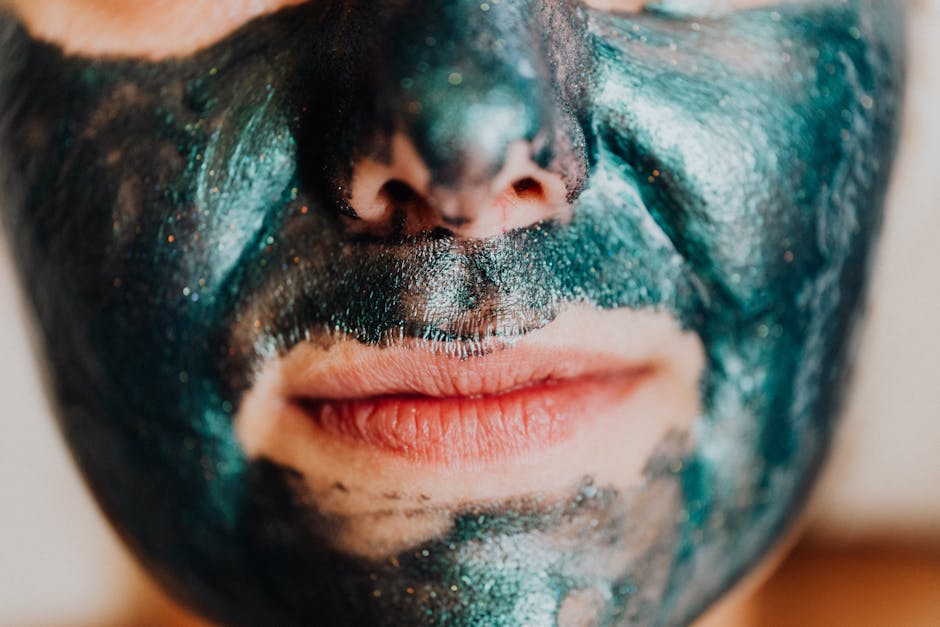
The beauty of green tea lies in its gentleness—unlike some anti-aging ingredients that can irritate sensitive skin, green tea soothes while it protects. It’s perfect for all skin types and ages, making it a versatile addition to any skincare routine focused on long-term skin health.
Rosehip & Sea-Buckthorn Oils for Vitamin A Power
If you’ve been curious about retinol but worried about irritation, mother nature has gifted us with two remarkable alternatives: rosehip and sea-buckthorn oils. These botanical treasures deliver vitamin A benefits without the dreaded “retinol uglies” that synthetic versions often cause.
Rosehip oil contains natural trans-retinoic acid—essentially vitamin A in its most skin-friendly form. This gentle compound encourages your skin cells to turn over more efficiently, revealing fresher skin beneath while stimulating collagen production. The beauty of this natural alternative? It rarely causes the redness, flaking, or sensitivity that often accompanies prescription retinoids.
“I recommend rosehip oil to clients who want retinol benefits but can’t tolerate the synthetic versions,” shares one skincare formulator. “It’s nature’s gentler approach to cell renewal.”
Both oils are rich in essential fatty acids that nourish your skin’s protective barrier. Rosehip delivers omega-3 and omega-6, while sea-buckthorn contains the rare omega-7 fatty acid—a true skin superfood. These fatty acids help lock in moisture, creating a protective shield against environmental damage while supporting your skin’s natural repair processes.
Perhaps most impressive is these oils’ ability to fade scars and even out tone. A compelling 2015 study found that people who applied rosehip oil twice daily for 12 weeks saw significant improvements in post-surgical scars—both in appearance and elasticity. The same properties make these oils excellent for addressing sun spots and post-inflammatory hyperpigmentation.
To welcome these anti-aging natural remedies into your routine, start by applying 3-5 drops of rosehip oil to slightly damp skin in the evening after cleansing. The slight moisture helps the oil penetrate more effectively. For intensive treatment, try blending equal parts rosehip and sea-buckthorn oils—though be prepared for sea-buckthorn’s vibrant orange hue, which may temporarily give your skin a sunny glow.
Gently press and massage the oils into your skin using upward motions, paying special attention to fine lines around your eyes and mouth. This simple ritual not only delivers potent ingredients but also improves circulation and lymphatic drainage.
“These oils are truly nature’s retinol alternatives,” notes a clean beauty advocate. “They deliver similar benefits—increased cell turnover, collagen stimulation, and pigmentation improvement—without the dryness and irritation many experience with prescription retinoids.”
For best results, use these oils consistently in your evening routine. While synthetic retinoids might show faster results, these natural alternatives build beautiful skin more gently over time—perfect for those embracing a long-term approach to skin health rather than quick fixes.
Honey & Propolis to Nurture the Skin Microbiome
Did you know your skin is home to billions of tiny beneficial bacteria? This collection—called your skin microbiome—plays a starring role in keeping your complexion youthful. Among the most effective anti-aging natural remedies, honey and propolis stand out as microbiome superstars.
Raw honey is nature’s perfect humectant, literally drawing moisture from the air into your skin. When I first started using raw honey masks, I was amazed at how my fine lines seemed to “drink up” the hydration, leaving my skin plump and dewy. The difference between raw, unfiltered honey and the processed stuff is significant—raw honey contains all its original enzymes and beneficial compounds.
“I recommend raw honey to my clients with aging concerns because it hydrates without disrupting the skin’s natural balance,” shares one esthetician. “Unlike some commercial moisturizers that provide temporary effects, honey works with your skin’s ecosystem.”
The antimicrobial properties of honey are particularly fascinating. Rather than killing all bacteria indiscriminately (like harsh cleansers might), honey selectively inhibits harmful microorganisms while creating an environment where beneficial bacteria can flourish. This balanced microbiome translates to clearer, more resilient skin that ages more gracefully.
Propolis—sometimes called “bee glue”—takes these benefits even further. Bees create this resinous mixture to protect their hives, and it works similarly on our skin. With over 300 active compounds identified in propolis, research shows it stimulates collagen production while providing powerful antioxidant protection.
What makes honey and propolis truly special is their probiotic synergy with your skin’s natural bacteria. As beneficial microbes thrive, they produce substances that strengthen your skin barrier and shield against environmental damage. It’s a beautiful, self-reinforcing cycle of skin health.
Ready to experience these benefits? Here’s how to incorporate honey and propolis into your routine:
- Create a simple honey mask by applying a thin layer of raw honey to clean skin for 15 minutes, then rinsing with lukewarm water. Do this once or twice weekly.
- Look for skincare products containing propolis extract, particularly in serums designed for mature or damaged skin.
- For a targeted treatment, mix a teaspoon of raw honey with a few drops of propolis tincture and gently pat onto areas with fine lines before bed.
“The skin microbiome represents the future of anti-aging research,” explains a microbiologist specializing in skin health. “While we’ve spent decades focusing on collagen and elastin, we’re now finding that nurturing these beneficial bacteria with ingredients like honey and propolis might be equally important for maintaining youthful skin.”
Avocado & Coconut for Lipid Barrier Rescue
Have you ever noticed how your skin seems to get drier and more fragile as you age? There’s a good reason for that! Your skin’s lipid barrier—the protective layer that keeps moisture in and irritants out—naturally weakens over time. Luckily, nature provides two remarkable solutions: avocado and coconut.
Think of avocado oil as your skin’s long-lost twin. It contains oleic acid, a fatty acid remarkably similar to your skin’s natural oils. This similarity is what makes avocado oil so effective—it doesn’t just sit on the surface but melts right in, delivering nourishment deep where your skin needs it most. Research has shown that regular use of avocado oil can actually increase the amount of soluble collagen in your dermis, giving your skin that bounce and firmness we all miss from our younger days.
Coconut oil works differently but just as effectively. It helps stimulate ceramide production—think of ceramides as the “mortar” between your skin cells’ “bricks.” When this mortar is strong, your skin looks smooth, plump, and youthful. While pure coconut oil might be too heavy for some faces (hello, breakouts!), lighter options like fractionated coconut oil or products with coconut derivatives can strengthen your barrier without clogging pores.
The deep nourishment these oils provide is especially valuable as we age. Remember how your skin seemed to bounce back from anything in your 20s? That’s because your skin was producing plenty of natural lipids. As production slows down, that dreaded “crepey” texture can appear—unless you’re proactive about replenishing those lipids.
Here’s how to make these anti-aging natural remedies work for you:
For nighttime nourishment, warm 2-3 drops of avocado oil between your fingertips and press gently into slightly damp skin. The small amount of water helps the oil penetrate more effectively.
When your skin needs extra TLC, mash half a ripe avocado with a teaspoon of coconut oil for a luxurious 15-minute mask. Your skin will drink it up, leaving you with a noticeably softer, more radiant complexion.
During harsh winter months, add a few drops of avocado oil to your regular moisturizer for an extra barrier boost against cold, dry air.
“Think of your lipid barrier as your skin’s first line of defense,” says one skincare formulator I spoke with recently. “When it’s compromised, even the most expensive treatments won’t work effectively. Restoring this barrier with compatible plant oils creates the foundation for all other anti-aging efforts.”
By incorporating these simple, natural oils into your routine, you’re not just treating the surface signs of aging—you’re rebuilding your skin’s fundamental protection system from the inside out.
DIY Banana-Yogurt Mask for Instant Glow
Who doesn’t love a quick beauty fix using ingredients straight from your kitchen? This simple DIY mask works wonders when you need that special glow – whether for a big event or just to brighten a dull complexion.
Bananas are nature’s beauty secret, packed with vitamins A and E that support healthy skin cell turnover and fight damaging free radicals. They also contain natural silica, a remarkable mineral that strengthens your skin’s connective tissue and improves elasticity – giving you that youthful bounce we all love.
Meanwhile, yogurt brings gentle exfoliation to the party through its natural lactic acid content. This alpha-hydroxy acid works by dissolving dead skin cells without the harshness of scrubs, revealing the fresher, brighter skin hiding underneath. This gentle exfoliation also creates the perfect canvas for better absorption of your favorite serums and moisturizers afterward.
Together, these simple ingredients create a temporary plumping effect that visibly softens fine lines and wrinkles. While not a permanent solution (nothing truly is!), this anti-aging natural remedy delivers impressive results when you want your skin to look particularly radiant.
Here’s my favorite recipe that clients always rave about:
- Mash half a ripe banana until completely smooth (lumps make application tricky!)
- Stir in 2 tablespoons of plain, unsweetened yogurt (Greek yogurt works beautifully)
- Optional boost: Add a teaspoon of honey for extra hydration and antimicrobial benefits
- Apply a generous layer to freshly cleansed skin, avoiding the delicate eye area
- Relax for 15-20 minutes (the perfect time to practice some deep breathing)
- Rinse with lukewarm water and follow with your usual moisturizer
“I recommend this mask to clients before special events all the time,” shares Emma, a holistic esthetician. “The combination of gentle exfoliation and deep nourishment creates that coveted ‘glass skin’ effect that photographers love – and it lasts for days!”
For best results, treat yourself to this mask weekly as part of your self-care routine. Your skin will thank you with a natural radiance that no highlighter can replicate. And the best part? You’re nurturing your skin with pure, food-grade ingredients – the kind of clean beauty that Beyond Beauty Lab champions.

Pomegranate & Fermented Foods for Inside-Out Radiance
Beautiful skin isn’t just about what you put on your face—it’s also about what you put on your plate. The connection between gut health and skin appearance has become one of the most exciting frontiers in anti-aging research, offering a truly holistic approach to maintaining youthful skin.
Pomegranate deserves special attention in any discussion of anti-aging natural remedies. This ruby-red fruit contains remarkable levels of ellagic acid, a polyphenol that fights aging at the cellular level. What makes this fruit truly special is how it works even better when fermented. A fascinating 2022 study revealed that participants using fermented pomegranate extract experienced significant improvements in skin brightness, elasticity, and moisture after just eight weeks—results you could actually see and feel.
The gut-skin axis might sound like medical jargon, but it’s simply the name for the fascinating two-way street between your digestive system and your skin. When your gut is inflamed or imbalanced, your skin often shows it through accelerated aging, dullness, or irritation. The opposite is equally true—when your gut microbiome is thriving, it produces compounds that support collagen production, reduce inflammation, and help maintain your skin’s moisture barrier.
“What happens in the gut doesn’t stay in the gut,” as one dermatologist puts it. “The health of your microbiome directly influences how quickly your skin ages.”
Fermented foods offer a delicious way to support this gut-skin connection. Traditional options like kimchi, sauerkraut, kefir, and kombucha deliver beneficial probiotics that improve gut health. But they offer something even more special called postbiotics—beneficial compounds created during the fermentation process that have their own impressive anti-aging benefits.
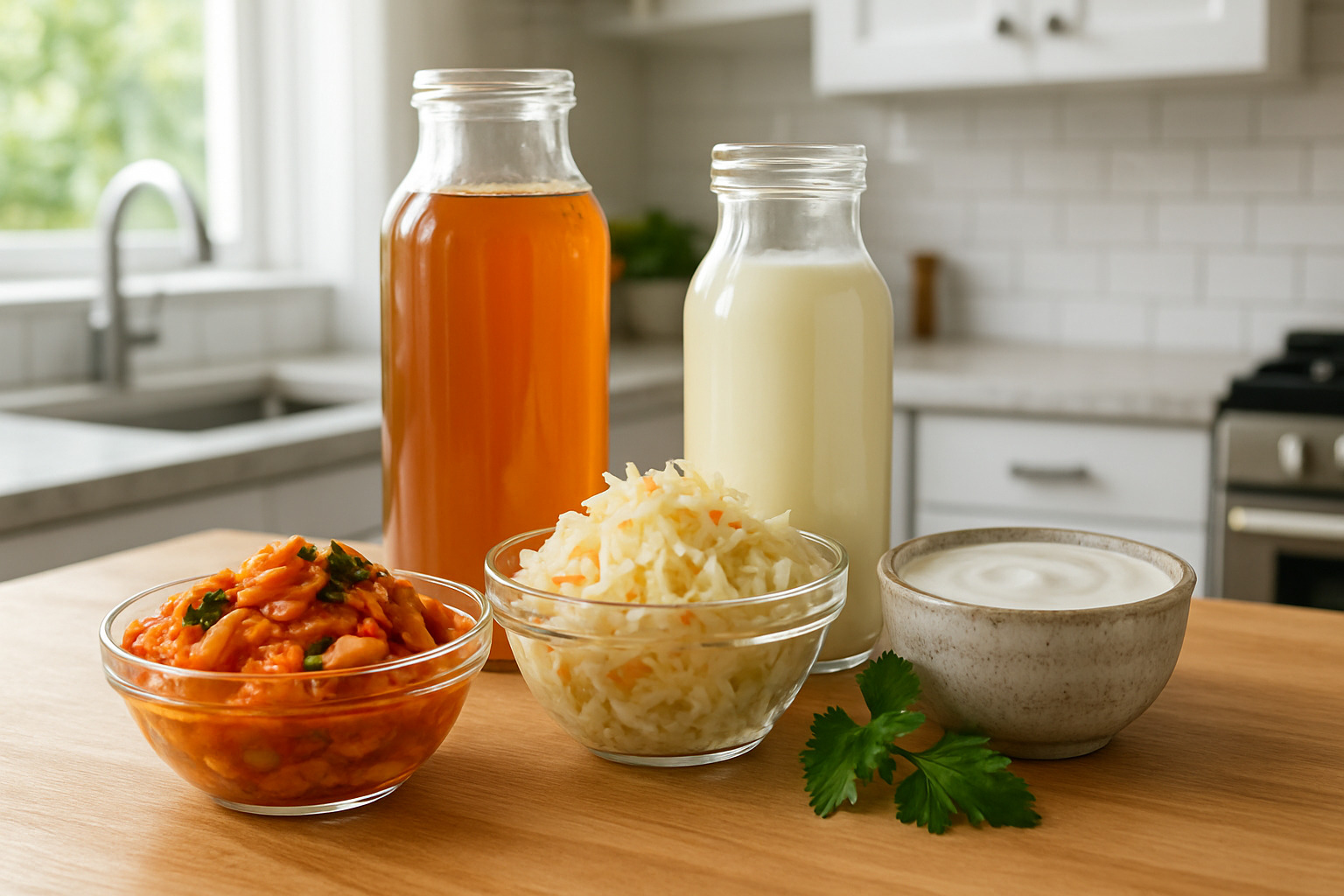
Adding these foods to your daily routine doesn’t require a complete diet overhaul. Even small amounts can make a difference. Try adding a spoonful of sauerkraut to your lunch, enjoying kefir as a morning smoothie base, or sipping on kombucha as an afternoon refresher. When pomegranates are in season, sprinkle the seeds on salads or yogurt, or look for unsweetened pomegranate juice to dilute with sparkling water for a skin-loving mocktail.
For those wanting more targeted support, supplements containing fermented pomegranate extract can be a convenient option, especially when fresh pomegranates aren’t available. The fermentation process makes the beneficial compounds more bioavailable, meaning your body can actually use more of the good stuff.
Diversity is key when it comes to feeding your gut microbiome. Aim to include a wide variety of plant foods in your diet, as each type nourishes different beneficial bacteria. Think of it as creating a diverse ecosystem on your plate that will be reflected in more radiant skin.
“The fermentation process not only preserves foods but actually improves their nutritional profile,” explains one nutritionist specializing in skin health. “Many traditional cultures with exceptionally youthful skin consume fermented foods daily—it’s no coincidence.”
This inside-out approach to beauty complements your topical skincare routine, creating a comprehensive strategy that addresses aging at its multiple sources. While creams and serums work on the surface, these nourishing foods work from within, supporting your body’s natural ability to maintain youthful, glowing skin.
Frequently Asked Questions about Anti-Aging Natural Remedies
Can natural remedies really reverse existing wrinkles?
When it comes to anti-aging natural remedies, this question deserves an honest answer. Natural approaches can definitely improve the appearance of wrinkles, but in ways that might differ from conventional treatments.
Think of natural remedies as supportive partners in your skin’s own healing processes. When you apply ingredients like aloe vera or rosehip oil consistently, they help your skin help itself. The improvement happens through several natural mechanisms.
First, proper hydration makes an immediate difference. Well-moisturized skin appears plumper, with fine lines looking significantly less noticeable – like how a dried raisin plumps when soaked in water. Natural humectants like honey and aloe draw moisture into your skin, creating this effect.
Over time, certain botanicals actually stimulate your skin’s collagen production. Vitamin C from natural sources, aloe sterols, and compounds in green tea gradually improve your skin’s underlying structure. This doesn’t happen overnight, but with patience, you’ll notice firmer, more resilient skin.
Antioxidant-rich remedies also protect your skin from further damage while giving your body’s repair systems a fighting chance. It’s like fixing a leaky roof before redecorating the ceiling – you need to stop the ongoing damage first.
As one dermatologist I spoke with explained, “Natural remedies work wonderfully for fine lines and early wrinkles. For deeper creases, they complement other treatments beautifully – improving results and helping prevent new wrinkles from forming.”
Be realistic, though. Those deep expression lines that have developed over decades won’t vanish completely with topical treatments alone. Natural approaches typically deliver gradual, sustainable improvements rather than dramatic overnight changes.
How long before I’ll see visible results?
Patience is your friend when working with natural skin remedies. Your results timeline depends on several factors – the specific ingredients you’re using, your skin’s current condition, your age, genetics, how consistently you apply products, and your overall lifestyle habits.
Here’s what you can realistically expect:
Right away (minutes to hours), you’ll notice immediate hydration benefits. Your skin will feel softer and look more radiant after applying ingredients like honey or fresh aloe gel. This temporary plumping effect can make fine lines less visible for several hours.
Within 1-2 weeks of consistent use, you’ll likely see improved texture and brightness. Those tiny fine lines that appear when your skin is dehydrated will begin to fade, and your complexion will look more even-toned and refreshed.
Around the 4-8 week mark is when more meaningful changes begin. This is when many people notice genuine improvements in skin elasticity, firmness, and moderate wrinkles. The 2017 study on vitamin C showed significant texture improvements after just three weeks of daily application.
The most impressive results come after 3+ months of dedicated use. This is when structural improvements from increased collagen production become visible, and more significant wrinkle reduction occurs. The 2009 aloe vera study demonstrated meaningful wrinkle reduction after 90 days.
As one skincare expert wisely noted, “Consistency trumps intensity every time. Using moderate concentrations daily gives better results than occasional treatments with high-potency products.”
When should I seek a dermatologist’s help?
While natural approaches can work wonders, certain situations call for professional guidance. Consider consulting a dermatologist in these scenarios:
When deep, persistent wrinkles haven’t responded to your natural routine after several months of consistent use, a dermatologist might suggest complementary treatments that work synergistically with your natural remedies.
Any sudden or dramatic changes in your skin’s texture, tone, or the appearance of new moles or growths should prompt an immediate professional evaluation. These could signal more serious concerns that require medical attention.
If you experience persistent irritation or reactions to natural ingredients, a dermatologist can help identify potential allergens and suggest alternatives that will work better for your unique skin.
Specific skin conditions like rosacea, eczema, or psoriasis often coexist with aging concerns and benefit from professional management alongside your natural anti-aging routine.
When considering combining your natural approach with professional treatments like microneedling, lasers, or injectables, dermatologist guidance ensures these work together safely and effectively.
“The most successful approach is often integrative,” explains one holistic dermatologist I interviewed. “Natural remedies provide excellent daily support and maintenance, while targeted professional treatments address specific concerns that might need more intensive intervention.”
Seeking professional help doesn’t mean abandoning your natural approach – it’s about creating the most effective comprehensive strategy for your unique skin needs.
Conclusion
The journey to youthful, radiant skin doesn’t require expensive procedures or synthetic chemicals. Nature has provided us with a remarkable pharmacy of anti-aging natural remedies that work with our body’s own processes to maintain skin health and resilience.
From the collagen-boosting properties of aloe vera to the free-radical fighting power of green tea, these natural solutions offer effective alternatives to conventional anti-aging products. The scientific evidence supporting these remedies continues to grow, validating what traditional wisdom has known for centuries.
At Beyond Beauty Lab, we believe in the power of evidence-based, clean beauty approaches that support both skin health and overall wellness. The natural remedies we’ve explored in this guide represent our commitment to helping you make informed choices about your skincare routine.
Prevention is always more effective than correction. The daily habit of applying sunscreen will do more for your long-term skin health than the most expensive creams applied later in life. Protecting your skin from sun damage and adopting healthy lifestyle habits creates a foundation that natural remedies can build upon.
I’ve found in my own skincare journey that consistency matters far more than complexity. A simple routine that you actually complete every day will yield better results than elaborate regimens used sporadically. Start with just one or two natural remedies that address your primary concerns, and build from there as needed.
The beauty of natural approaches is how they complement each other. Combining topical treatments with dietary strategies and stress management creates comprehensive results that address aging from multiple angles. That pomegranate you enjoy as a snack works alongside the rosehip oil you apply at night, creating synergistic benefits greater than either alone.
While natural ingredients are generally gentler than their synthetic counterparts, natural doesn’t mean risk-free. Always patch test new ingredients and introduce them gradually into your routine, especially if you have sensitive skin.
As you incorporate these natural remedies into your daily life, I hope you’ll come to see aging as a natural process to be acceptd rather than feared. Our goal isn’t to eliminate every line and wrinkle—it’s to maintain healthy, resilient skin that reflects our inner vitality at every age.
Stay consistent, be patient, and enjoy the process of caring for your skin naturally. The results will speak for themselves.
For more information about wellness resources that complement your skincare journey, visit our wellness resources page.


